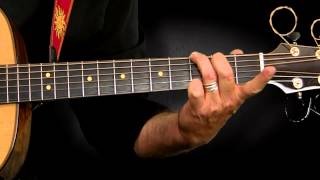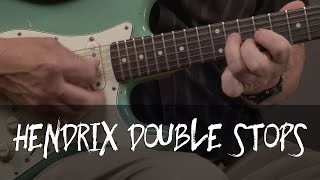Key-Specific Improvising - an overview
Published on 26 January 2016
Improvising guitar lesson. Improvisation on guitar with pentatonic scales or with blues scales. Improvising over chord changes.
From the Secret Guitar Teacher: http://secretguitarteacher.com/youtube/intermediate/electric/pkUEA48ver8/83670527-key-specific-improvising-an-overview.php
This video is a sample from the Secret Guitar Teacher website. It is not aimed at complete beginners, but is ideal for those who have learned a few scale patterns and are now wondering what they're supposed to do with them!
Here's the abridged transcript:
Immediately you approach the subject of improvising you hit the question: How do I select the right notes to play when?
Broadly speaking there are two systematic approaches to finding the right notes to use when improvising.
Ultimately, the chord-specific approach is the most powerful of these,but
if you are getting into improvising for the first time I strongly recommend mastering the key-specific system first.
There are altogether six types of scales that are good to get under your belt. Let's give you a quick tour:
The Blues Scale is the one to start with.
Its first line of application is, as you might expect, Blues music. But it also works great over minor ballads and Reggae tunes in minor keys:
By using the same patterns in relative keys -- a trick that will be fully explained on this course -- you will find yourself using the Country scale. Again it's first line of application is Country music..
But it also works great over major key ballad-based songs and some trad jazz tunes...
So you can see that once you have mastered the blues scale patterns there's already quite a range of music you can Jam along to. But here's some more good news:
By simplifying the blues scale patterns and dropping just one note you get another two scale types to work with:
These are the pentatonic scales. The Minor pentatonic is the staple diet of Rock Guitarists:
The pentatonics are also much used in folk music. Celtic folk tunes often have a Major pentatonic feel to them
Finally -- by adding a couple of notes to the pentatonic scale patterns we can create the natural minor scale and the major scale.
These are a little more difficult to improvise with, which is why we leave them until last.
The Natural Minor scale has a large number of applications. One that we look at early on is to give your solos a Spanish flavour -- what I call pseudo flamenco. We'll also look at using it in a melodic jazz style
Finally, the Major Scale -- staple diet of Hymn tunes, nursery rymes, Trad jazz tunes, and American folk tunes among many, many other applications
In this short demo we have only just scratched the surface of what can be done with this method. So you can see that key-specific improvising has a very broad range of applications.
The first key to achieving success with this approach to improvising is to learn and then drill the scale patterns as thoroughly as possible. You will find plenty of help with this on the course and in the Secret Guitar Teacher's Gym section of the site.
The second key to success is to spend a lot of time improvising. Improvising for most people is the most rewarding element of guitar playing and I wish you many hours of fun with it!
See you on the course!
 2 Scales Every Guitar Player Should Know
2 Scales Every Guitar Player Should Know
 3 Intermediate Fingerstyle Rhythm Patterns - Guita...
3 Intermediate Fingerstyle Rhythm Patterns - Guita...
 How To Play Dmaj9 (D major ninth) on the guitar.
How To Play Dmaj9 (D major ninth) on the guitar.
 Music Theory: Key Modulation
Music Theory: Key Modulation
 RobbieCalvoGuitar.com - D Dorian Lesson
RobbieCalvoGuitar.com - D Dorian Lesson
 Guitar Chord Voicings and Inversions - How to Use...
Guitar Chord Voicings and Inversions - How to Use...
 Pentatonic Theory
Pentatonic Theory
 Travis Picking with Don Ross
Travis Picking with Don Ross
 Jimi Hendrix Double Stop Guitar Lesson
Jimi Hendrix Double Stop Guitar Lesson
 Four Note Solo Over Four Chords | Guitar Lesson |...
Four Note Solo Over Four Chords | Guitar Lesson |...







